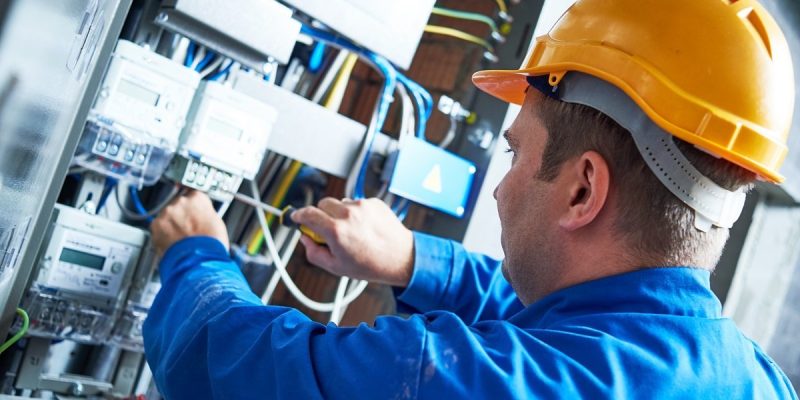If you’ve ever tried to wire a building, install new electrical systems, or even run an electrical contracting business in Singapore, you’ve probably bumped into one unavoidable fact: you cannot operate legally without an electrical installation licence. Yes, it’s one of those essential pieces of paperwork that can make or break your career—or your business. But don’t worry. By the end of this post, you’ll know everything you need about getting your hands on this licence without tearing your hair out.
Why You Even Need an Electrical Installation Licence
You might be thinking, “Why do I need a licence? I know my way around a circuit board.” But here’s the deal: in Singapore, electrical safety is serious business. The Energy Market Authority (EMA) strictly regulates electrical installations to prevent accidents, fires, and system failures. A licence proves you are trained, qualified, and compliant with all the local laws.
The Legal Requirement Explained
An electrical installation licence isn’t just a suggestion—it’s mandatory for anyone who wants to carry out electrical installation work professionally. Without it, you could face fines, legal action, or even closure of your business. Think of it as your golden ticket to play in Singapore’s electrical industry legally and safely.
Safety and Trust Go Hand in Hand
Beyond legal obligations, having an electrical installation licence shows your clients you are credible and competent. For homeowners and businesses, this is huge. They are entrusting you with their safety, and nothing says “trustworthy” like a government-issued licence.
Who Can Apply for an Electrical Installation Licence
Getting your licence isn’t like applying for a library card—it has some specific eligibility requirements.
Individual vs Company Licence
In Singapore, there are two main types of electrical installation licences:
- Individual Licence: Issued to a qualified person who can carry out installation work personally.
- Company Licence: Issued to a business entity, allowing the company to legally undertake electrical projects.
If you’re running a contracting business, the company licence is non-negotiable. Individuals working as electricians or engineers can apply for their personal licence.
Qualification Requirements
You can’t just stroll in and ask for a licence. The EMA requires proof of relevant qualifications, typically including:
- Recognised electrical engineering or technical certification
- Practical experience in electrical installation work
- Completion of mandatory safety courses
The goal is simple: they want to ensure you know what you’re doing before you touch live wires.
Step-by-Step Process to Get Your Licence
Now that you know why and who, let’s get into the how. The process can seem complicated, but breaking it into steps makes it manageable.
Step 1: Gather Required Documents
Before applying, ensure you have all necessary documents. These usually include:
- Academic certificates or diplomas
- Proof of practical work experience
- Identification documents (NRIC or passport)
- Any previously issued licences or certifications
Having everything ready upfront will save you from multiple trips back and forth.
Step 2: Submit Your Application to EMA
Applications are submitted online via the EMA eService portal. Make sure you fill out the form accurately. Any errors or missing information can delay your application significantly.
- Double-check your personal details
- Attach scanned copies of all required documents
- Pay the application fee
Once submitted, EMA typically takes a few weeks to process individual licences and a bit longer for company licences.
Step 3: Sit for Assessments or Interviews
Depending on your background, EMA may require an assessment of your technical knowledge. This ensures you understand Singapore’s electrical codes and safety standards. It’s not as scary as it sounds; think of it as a structured way to prove you know your stuff.
Step 4: Licence Approval and Issuance
Once you pass all requirements, EMA will issue your electrical installation licence. Congratulations—you’re now legally allowed to undertake electrical installation work in Singapore. Keep in mind the licence has an expiry date, and you’ll need to renew it periodically to stay compliant.
Common Mistakes to Avoid When Applying
Even after you understand the steps, mistakes happen. Here’s what you should watch out for.
Mistake 1: Submitting Incomplete Documents
This is the most common reason applications get delayed or rejected. Always double-check that you’ve attached everything required, including certificates, ID, and proof of experience.
Mistake 2: Ignoring Safety Training Requirements
Some applicants assume that formal education alone is enough. It’s not. Safety training is mandatory, and skipping it can mean wasted time and money. Make sure you complete all courses approved by EMA.
Benefits of Having an Electrical Installation Licence
If you’ve made it through the application, you’re probably wondering, “What’s in it for me besides legality?” Well, plenty.
Boost Your Credibility with Clients
An official licence demonstrates professionalism. Clients are more likely to hire you knowing you meet all regulatory standards.
Expand Your Business Opportunities
Companies and contractors prefer working with licensed professionals. Having your licence opens doors to larger projects and even government contracts. Essentially, it’s your ticket to bigger, better, and safer projects.
Renewal and Continuing Compliance
Getting your licence isn’t a one-and-done deal. Singapore requires regular renewal, and staying compliant is crucial.
Keep Track of Expiry Dates
Your licence typically expires every few years. EMA will notify you, but it’s wise to mark it on your calendar and prepare renewal documents in advance.
Stay Updated on Regulations
Electrical codes and safety standards evolve. Regularly check EMA updates and attend refresher courses if required. Staying informed protects you, your clients, and your business.
Conclusion
Getting an electrical installation licence in Singapore may seem daunting at first, but with the right preparation, it’s straightforward and absolutely worth it. Not only does it make you legally compliant, but it also boosts your credibility, ensures safety, and unlocks more opportunities in the electrical industry.
Remember, the key steps are clear: understand the legal requirements, gather your documents, submit your application, pass assessments, and stay compliant through renewal and continuous learning. With this approach, electrical work in Singapore becomes less of a bureaucratic headache and more of a professional advantage.
So, whether you’re an aspiring electrician, a contractor, or a business looking to hire qualified professionals, securing an electrical installation licence is non-negotiable. Take action today, and let your licensed status speak for your expertise tomorrow.













Comments